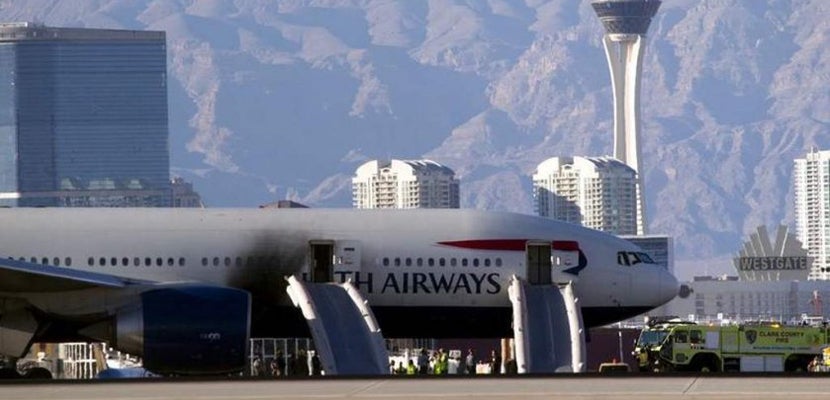Insider Series: Lessons from the Evacuation of BA Flight 2276
On September 8 at Las Vegas' McCarran Airport (LAS), British Airways flight 2276 experienced an aborted take-off due to an engine fire, and the aircraft's subsequent evacuation garnered praise for its cabin crew — despite the fact that many passengers didn't follow their directions. TPG Insider Carrie A. Trey, a flight attendant with a major airline, shares what crew are trained to do in this type of emergency, and what you as a passenger should do in a similar situation.
Last week's aborted take-off and engine fire on BA flight 2276 served as a reminder that things can go extremely wrong in aviation — often with little warning — and we mustn't be complacent about our safety on airplanes. In the aftermath of this most recent incident, I've noticed two threads on both social media and in the news reports related to the incident: fever-pitch anger at those passengers who took the time to gather their belongings before leaving the plane, and praise for the cabin crew who performed their duties "like clockwork."
To give you a bit of background into this impassioned dialogue, know that there are a set of positive, proactive commands that all crew members — industry-wide — are trained to shout in an emergency. At the first sign of something going awry, your crew will command you to either "Brace! Get down, stay down!" or "Bend over! Stay down!" If conditions on the aircraft are deemed to be safe and there's no need to evacuate, the command that follows will be something along the lines of "Remain seated and stay calm!"
A crew will initiate an evacuation in only one of two circumstances:
1) If the flight's captain orders it;
2) A crew member deems that conditions in their portion of the aircraft are unsafe and/or incompatible with human life.
Seated in the cockpit, a captain may not initiate an evacuation because he or she lacks important sensory information; for example, there could be no indication that the aft section of the airplane is filling with smoke. A cabin crew member will attempt to communicate a problem to the captain, but if a response isn't quickly forthcoming or the crew member deems the situation perilous, then he or she will sound an evacuation horn, and all of the other crew members will immediately follow protocol, no questions asked. ("No doubt, get out" is a phrase that all crew are taught in training.)
In this video, the evacuation horn can be heard in the background as BA 2276's First Officer tells the control tower — in an utterly calm, collected tone of voice — that an evacuation of the aircraft has begun:
Once an evacuation has begun, the aircraft must be empty of passengers and crew in 90 seconds or less. In order for an aircraft to gain certification, it must be able to be evacuated of its maximum load of passengers in this amount of time.

Frustratingly, the evacuation of BA flight 2276 reportedly took almost five minutes because many passengers set about grabbing their luggage instead of focusing on their safety and that of their fellow passengers. It's important to remember that in an emergency, gathering your luggage wastes precious time; its bulk can potentially block both you and other passengers from reaching an exit; and on an evacuation slide, it may cause damage to the slide itself and/or become a projectile that injures you or others.
In particular, blocking an exit can cause panic and double the number of passengers at remaining usable exits. To see how a scenario like this could play out, check out this video of the certification evacuation for the A380, a simulated emergency using laymen as passengers, in which eight out of the aircraft's sixteen exits were rendered unusable:
Despite the inappropriate actions of some passengers aboard BA 2276, the cabin crew did exactly what we're all trained to do in an emergency, all while remaining cool and steady. In addition, the captain and cockpit crew followed protocol to the letter, and they and the cabin crew worked in concert until all 157 passengers were off the plane. (Though 14 people suffered minor injuries in this harrowing incident, all passengers and crew reached relative safety.)
I offer my most sincere and heartfelt compliments to the crew of BA 2276 for their professionalism in the face of such catastrophic adversity. I hope that the lessons we learn from the evacuation of BA 2276 lead us — both crew and passengers — to work together toward a safe, positive outcome the next time disaster strikes.
Remember to listen to your crew, and leave your luggage behind!
[card card-name='Chase Sapphire Preferred® Card' card-id='22125056' type='javascript' bullet-id='1']
